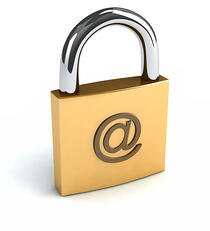Optometry EHR: Secure Communications and Interoperability
Ian Lane is back again with his blog series that focuses on a variety of topics related to optometry EHR and Meaningful Use. He previously discussed the differences between Stage 1 and Stage 2 of Meaningful Use, and the importance of workflow when it comes to your EHR. Today he wants to talk about secure communications and interoperability between doctor to doctor and patient to doctor.
Ian's Insights: Optometry EHR & Secure Communications
In a previous blog we addressed the issue of workflow and usability. This time I want to talk about the real goal of Stage 2 of Meaningful Use and using a 2014 certified optometry EHR. It's all about secure communication exchange between doctors as part of our patient's care team, and communiction between you and your patient.
Medical record security is a familiar concept to us as we were introduced to HIPAA and the escalating patient privacy requirements over the years already. Protected Health Information (PHI) is foremore in our minds. Communicating PHI is an issue that was initiated as part of Stage 1 Meaningful Use, and really ramped up for Stage 2 (2014 certification). It is not much more than simply sending a report to another doctor.

Until now we have all developed our own (or adapted from others) reports which we believed conveyed the PHI information in a meaningful way. This meant that we were all looking at similar information, but it was formatted and laid out differently from doctor to doctor. In addition, since these reports were all free typed or handwritten text, once the report has been read it could not instantly become an integral part of the medical record. These reports were filed and not very useful for future care.
So the new norm is that reports are standardized in both format and more substance. This means that irrespective of who you send to, or receive a report from, you will always find the information presented to you in the same manner. This makes less chance for confusion or worse yet, missing information. In addition, all of the information included in the reports is standardized using the various structured vocabulary codes (such as CPTs, ICDs, SNOMED CT, and LOINC). All this means is that each term has an underlying code that can be transported electronically and interpreted by any other receiving 2014 certified EHR. Now here's the really exciting part. Not only can the report be interpreted so that it can be read by the receiving doctor, but no mistakes can occur due to handwriting or typos, and the data in the report can also be merged into the receiving doctor's certified EHR directly.
So what does this look like to you as a clinician? Picture a patient coming in to see you and your staff are notified that a report (called a Continuation of Care Document, or CCD) is waiting in your secure email inbox. This email attachment can be opened as a PDF and/or imported directly into the patient's electronic chart which will merge all known demographics, procedures, dianoses, medications, allergies, special test results, radiology, lab tests results, vital signs, smoking status, immunizations, and other providers that are part of the patient's care team.
Doctor to Patient and Patient to Doctor Communication and Health Info Exchange
 No doubt you have heard the buzzwords, "Patient Portal" frequently since Stage 2 Meaningful Use has become high on everyone's radar. This is a secure communications tunnel between the doctor's office and patients. It is actually a form of a secure mail, like Gmail, except that it has it's own patient login and password and it is used only to communicate with your office. So, how does this make both the patient's and your life easier?
No doubt you have heard the buzzwords, "Patient Portal" frequently since Stage 2 Meaningful Use has become high on everyone's radar. This is a secure communications tunnel between the doctor's office and patients. It is actually a form of a secure mail, like Gmail, except that it has it's own patient login and password and it is used only to communicate with your office. So, how does this make both the patient's and your life easier?
When a new patient chooses to schedule an appointment, your 2014 certified EHR will send the patient an email with a link to their own portal. From this secure website, they can complete all the usual information such as insurance, history, lifestyle, etc. This information can be securely emailed back to your office and imported directly into the patient's medical record.
In addition, you will be able to request the medical history from other providers which the patient may have on file, or request the CCD from the names of known providers. And all of this information can be imported into the medical record.
Just think of all the paperwork you'll be free of! You will be much more efficient and accurate. There are many other advantages for the patient and your practice as well such as online bill pay, prescription requests, and pushing patient educational material and videos. Expect to hear more about these in future blog posts!
Getting excited about secure EHR communications? Check out Uprise!

